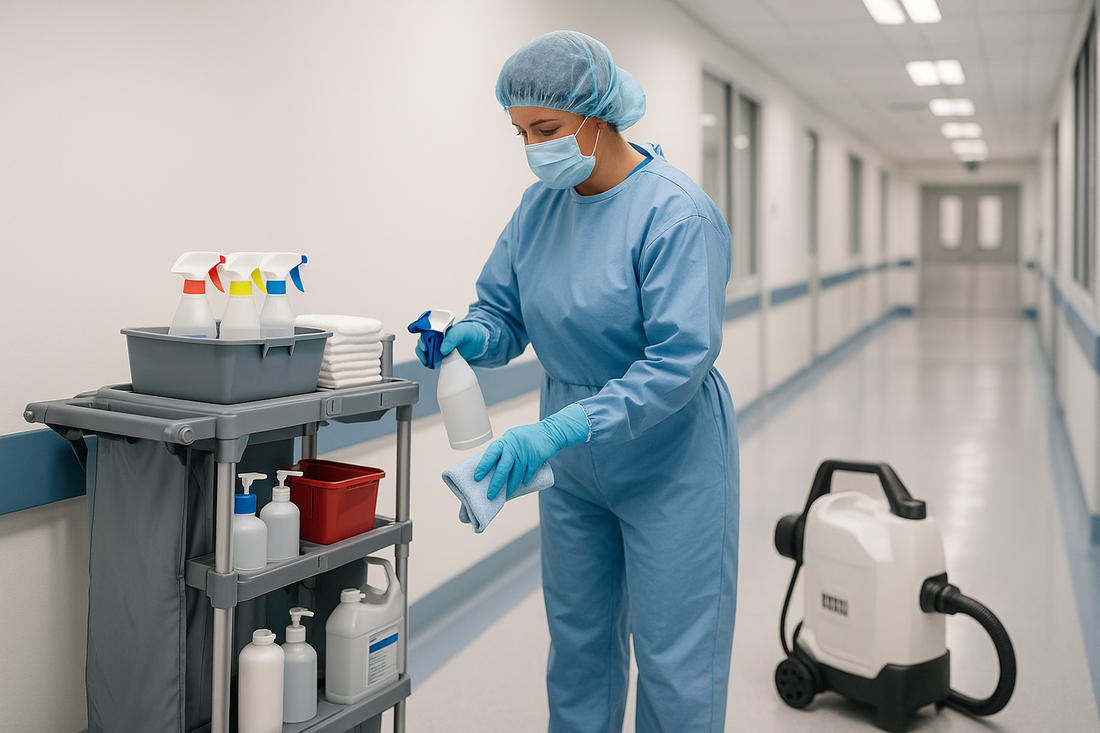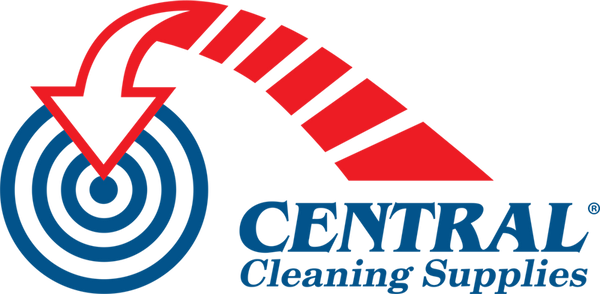
Healthcare Facility Cleaning Guidelines
Share
Healthcare Facility Cleaning Excellence
Master Australia's most stringent hygiene standards and become the trusted partner healthcare providers depend on for life-saving infection control.
Why Healthcare Cleaning Matters More Than Ever
Healthcare facilities operate under some of the world's most stringent hygiene and infection control standards. For professional cleaning companies servicing hospitals, aged care facilities, medical centres, and allied health practices, understanding and implementing proper cleaning protocols isn't just about meeting compliance requirements - it's about protecting lives and maintaining the trust that healthcare providers place in your services.
Every Cleaning Decision Directly Impacts Patient Health
Advanced protocols to combat multi-resistant organisms and prevent outbreaks whilst building lasting relationships with healthcare providers through excellence.
Australian Healthcare Cleaning Standards
Navigate the complex regulatory landscape with confidence using our comprehensive framework
ACSQHC
Australian Commission on Safety and Quality in Health Care provides foundational infection control guidelines through the Australian Guidelines for Prevention and Control of Infection.
TGA Compliance
Therapeutic Goods Administration regulates all disinfectants and cleaning products for healthcare use. Only TGA-approved products are permitted in healthcare facilities.
AS 5369:2023
Australian Standard governing reprocessing of reusable medical devices and equipment with updated reprocessing standards for 2023.
Risk Assessment & Cleaning Classification
High-Risk Areas
- Operating theatres
- Intensive care units
- Isolation rooms
- Sterile supply areas
Frequency: Daily deep cleaning + immediate post-use cleaning
Medium-Risk Areas
- General patient rooms
- Emergency departments
- Outpatient clinics
- Dialysis units
Frequency: Daily cleaning with thorough high-touch surface disinfection
Low-Risk Areas
- Administrative offices
- Corridors
- Waiting areas
- Staff break rooms
Frequency: Regular cleaning with standard disinfection protocols
Core Hygiene Standards
Master the fundamental principles that form the backbone of effective healthcare cleaning
Environmental Cleaning Principles
- Mechanical Cleaning First: Physical cleaning must always precede disinfection, even with 2-in-1 products. The mechanical action is essential for removing organic matter that harbours pathogens.
- Contact Time Critical: Disinfectants must remain on surfaces for specified contact time (1-10 minutes) to achieve claimed antimicrobial effectiveness.
- High-Touch Priority: Door handles, bed rails, light switches, call buttons require frequent cleaning throughout the day.
Standard Precautions Checklist
- Personal Protective Equipment: Disposable gloves, protective eyewear, appropriate clothing
- Hand Hygiene Protocol: Proper handwashing or sanitiser use before/after each task
- Safe Work Practices: Never mix products, ensure ventilation, follow dilution instructions
Advanced Infection Control Protocols
Combat the most challenging pathogens with specialised protocols
Multi-Resistant Organism (MRO) Management
Common MROs in Healthcare:
- MRSA - Methicillin-resistant Staphylococcus aureus
- VRE - Vancomycin-resistant Enterococci
- CPE - Carbapenemase-producing Enterobacteriaceae
Enhanced Protocols Required:
- Enhanced Frequency: Daily cleaning plus terminal cleaning upon discharge
- Dedicated Equipment: Colour-coded systems prevent cross-contamination
- Terminal Cleaning: Deep disinfection of all surfaces and fixtures
C. diff Special Considerations
C. diff spores are highly resistant to standard disinfectants and require sporicidal disinfectants (sodium hypochlorite), extended contact times, thorough mechanical cleaning before disinfection, and specialised disposal of contaminated materials.
Colour-Coded Cleaning System
Prevent cross-contamination with strict colour-coding protocols
General Patient Areas
Public Areas & Offices
High-Risk Areas
Isolation Rooms
Quality Assurance & Compliance
Build trust through systematic documentation, training, and continuous improvement
Documentation Requirements
- Cleaning schedules & completion logs
- Product usage & dilution records
- Staff training certifications
- Incident reports & corrective actions
- Regular audit results
Staff Training Components
- Infection control principles
- Proper PPE usage & disposal
- Chemical safety & MSDS
- Equipment operation & maintenance
- Emergency spill response
Regular Monitoring
- Monthly compliance audits
- Quarterly equipment calibration
- Annual staff competency tests
- Healthcare facility feedback
- Continuous improvement programs
Key Takeaways for Success
Your roadmap to becoming the trusted healthcare cleaning partner
- TGA-Approved Only: Always use government-approved disinfectants for healthcare applications
- Risk-Based Approach: Implement cleaning frequencies and protocols based on risk assessment
- Detailed Documentation: Maintain comprehensive records for compliance and quality assurance
- Invest in Training: Comprehensive staff training and certification programmes are essential
- Clear Communication: Establish strong communication channels with healthcare facility management
- Stay Current: Keep up with evolving guidelines and emerging technologies
Ready to Elevate Your Healthcare Cleaning Standards?
Transform your cleaning operations and become the trusted partner healthcare facilities depend on for infection control excellence.
Professional Excellence • Lives Protected • Trust Built

